From Saltwater Crocs to the world’s most venomous snakes, Australia houses more reptile species than any other country on the planet. With more than 600 known species distributed throughout Australia, lizards are the most diverse – and arguably underrated – members of the group.
Everywhere you go in Australia you will find lizards, and your observation might even be important to science,” says Janine Duffy, Co-Founder of Echidna Walkabout, which runs tours to wildlife-rich regions of southeastern Australia. “Lizards are not as popular, well-known or well-studied as birds and mammals, so you could discover a new species.
From giant Goannas to the Top End-dweller immortalised on an Aussie coin, here are some of the most iconic specimens to keep your eyes peeled for on wildlife safaris across the country.
Goannas
Also known as monitors, there are more than 25 species of Goanna – known for their beautifully patterned skins – found across Australia. Growing up to 2.5m long, the perentie is the largest. Found in arid desert areas of WA, the NT, SA and QLD, these huge lizards have strong totemic significance to Red Centre Aboriginal communities, and remain a favourite traditional bush tucker food to this day.
“To watch perenties run is just incredible – they move so fast,” says Monica Foster, Digital Marketing and Sales Manager of SEIT Outback Australia based in Uluru – one of the perentie’s favourite habitats.
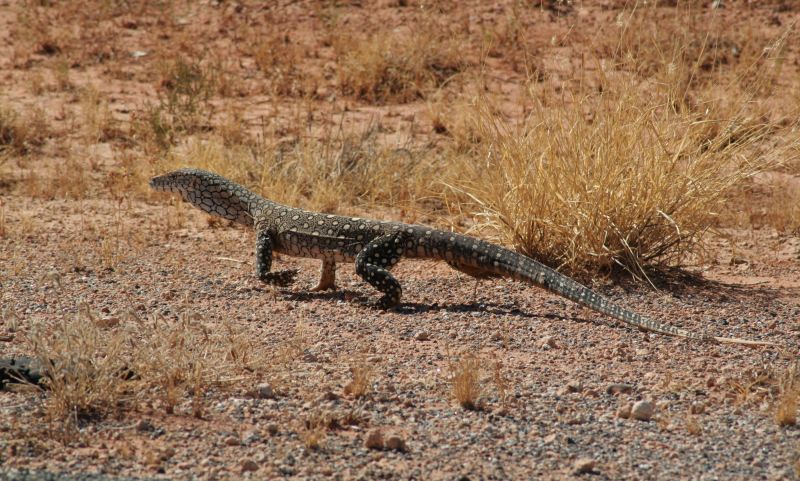
Perentie wandering across Australia's Red Centre
Further south, in southern regions of the Australian Capital Territory, New South Wales, South Australia, Western Australia and Victoria, the Rosenberg’s Goanna is best known for its unique method of incubating its eggs in termite mounds. Although found sparodically across the mainland, the Rosenberg's Goanna is commonly spotted on Kangaroo Island.
“Once egg-laying is completed, the female will stand guard while the termites repair the damage, sealing in the eggs until they hatch, and the baby lizards burrow out,” says says Craig Wickham, Managing Director of Exceptional Kangaroo Island.
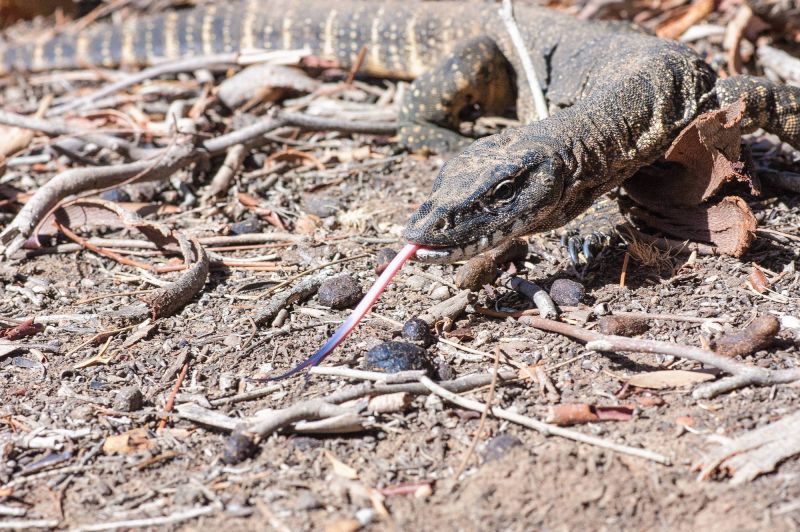
Rosenberg's Goanna on Kangaroo Island, Credit: Craig Wickham
Dragons
They might not breathe fire, but Australia’s dragon lizards are still pretty special. With its head spikes and enlarged cheek scales, Far North Queensland’s Boyd’s Forest Dragon is one of the most rewarding to spot.
“The best thing about the Boyd’s Forest Dragon is that they like to hide in plain sight,” says James Boettcher, Owner-Operator of FNQ Nature Tours. “That said, they are so well camouflaged that if you’re not looking for them – typically on trees at head height – you won’t see them.”
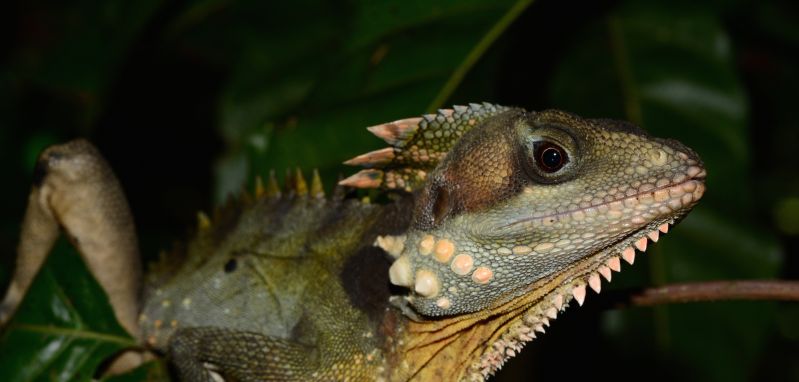
Boyd's Forest Dragon in the Daintree Rainforest, Credit: James Boettcher
One of Australia’s most well-known lizards, the Thorny Devil is also a member of the dragon or Agamidae family. Typically seen walking across sandy deserts during Autumn and Spring, these small lizards covered in desert-hued spikes have a particularly unique way of moving around their environment to disguise themselves from predators.
“They almost take one step forward and a couple of steps back to give off a rocking motion,” says Monica from SEIT Outback Australia. “This makes them look like a leaf blowing in the wind.”
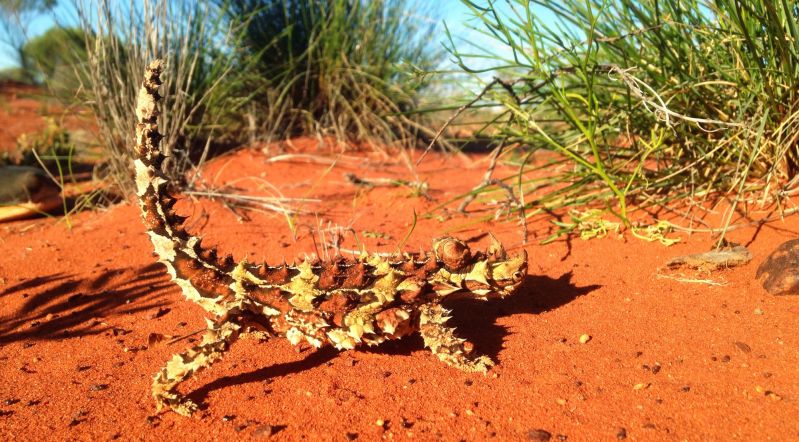
Thorny Devil in front of Uluru
Arguably Australia’s most famous dragon, however, is the Frill-necked Lizard. Famously featured on Australia’s two-cent coin before the denomination was pulled from circulation in 1992, the Frill-necked Lizard is named for the large frill it displays during territorial disputes, to discourage predators, and during courtship. Found mainly in northern Australia, this relatively large lizard (growing to an average of 85cm) is the one to look out for on a Top End safari with the likes of Lord Safaris, which specialises in off-the-beaten-track safaris to Kakadu and Arnhem Land. While most commonly photographed on the ground with their frills on display, frill-necks actually spend most of their time in trees feasting on insects and smaller lizards.

Skinks
While skinks are often thought to be tiny, some of Australia’s fattest lizards actually belong to the skink family. Found in semi-arid areas of southern and western Australia, stumpy, dark brown shinglebacks are covered in hard ‘shingles’ to protect themselves from predators.
“Shinglebacks can live for 50 years and have lifelong partners, too,” says David Doudle, Managing Director of Goin’ Off Safaris, which offers a range of wildlife tours on and around South Australia’s stunning Eyre Peninsula. “Their slow-moving nature means that when discovered, you can usually get quite close,” David adds.
Found along the north, east and southeast coastal regions of Australia – and commonly spotted in suburban backyards – the chunky Blue-tongued Skink, which is typically greyish in colour with broad brown stripes, is distinguished by its cobalt tongue, which it sticks out to scare off predators. “Like shinglebacks, these similarly slow-moving lizards also like to blow themselves up and open their mouths to look aggressive,” says David.
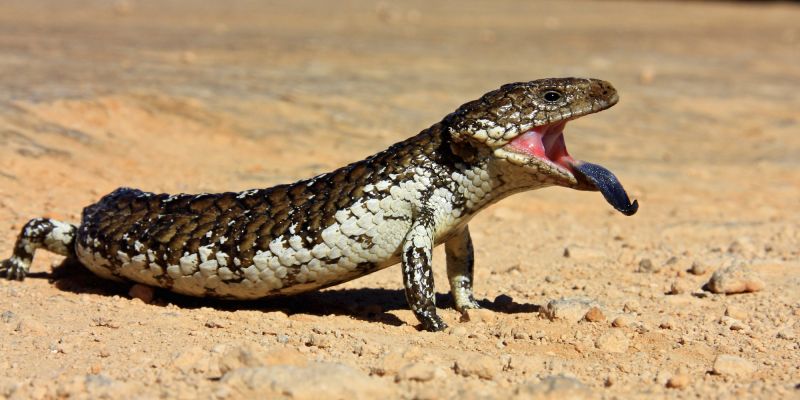
Blue-tongued Skink displaying its famous tongue
Geckos
Australia is home to over 100 native species of gecko, a nocturnal lizard often spotted stalking mosquitos and other bugs around outdoor lights. If you’re headed to South Australia’s Flinders Ranges during the summer months, the Barking Gecko is the one to look – or more appropriately listen – out for.
“Weighing in at a mere 20 to 25 grams, this spectacularly patterned gecko has a much bigger bark and attitude,” says Charlie Eager, Lodge Manager at the Arkaba, a luxurious bush lodge nestled in South Australia’s Flinders Ranges. “With a reputation for standing their ground, the tiny geckos emit a unique barking sound when they feel threatened,” adds Charlie. “They will raise themselves up off the ground to enhance their size and even bite even humans if they feel threatened enough.”
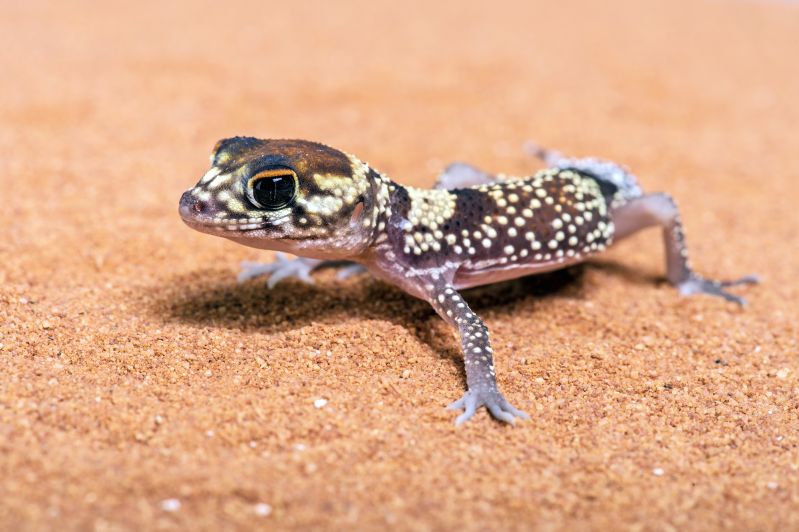
Barking Gecko


